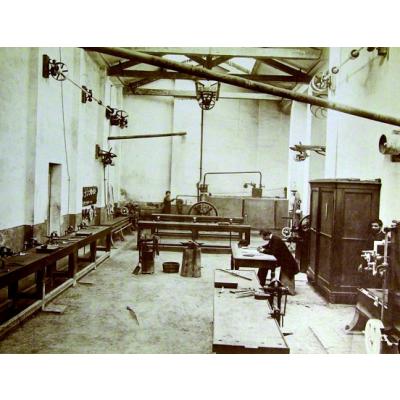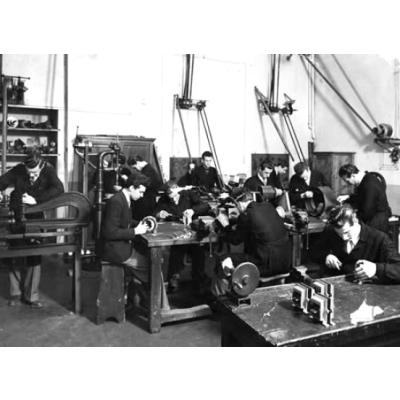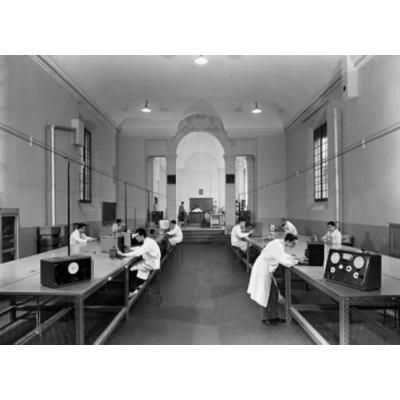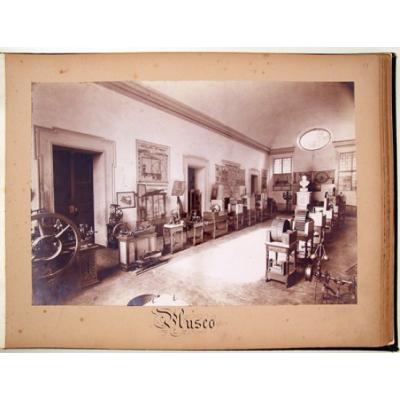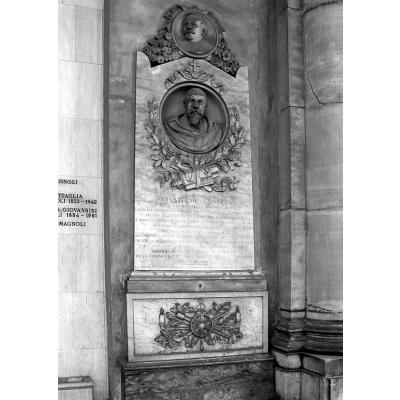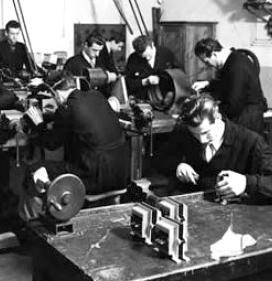Schede
In the early 19th century, Bologna found itself in a precarious economic situation due to the decline of silk production and processing, which had brought fame and wealth to the city in previous centuries. This situation led the physicist Giovanni Aldini (1762-1834) and the economist Luigi Valeriani (1758-1828) to leave testamentary wills and bequests to the Municipality of Bologna for the creation of a school for mechanics, craftsmen, technicians and entrepreneurs. Thanks to these bequests, a commission of craftsmen, university professors and municipal councillors formulated the project for what would become the Scuole Tecniche Bolognesi (Technical Schools of Bologna) in 1844, a name that would be used until 1878. The Schools were public and free, and presented a very different course of study from that followed by the traditional schools. Theoretical notions of arithmetic, geometry, physics, chemistry and drawing were accompanied by laboratory practice, the study and creation of machines, and applied chemistry.
In 1860 the Bolognese Technical Schools were the subject of an organic commission examining their state of affairs following the propagation of the Casati Law of 1859. The commission decides to close them and turn them into a museum, sometimes used as a centre for technical consultancy, but the schools opened following the Casati law are harshly criticised as they were considered to be of a very low level in the practical field. For this reason, the Technical Schools were reopened in 1861 in new premises and with a new name, in Via de' Foscherari under the name of Scuola Valeriani di Disegno applicato alle arti industriali (Valeriani Institute of Drawing applied to industrial arts). This new institute immediately won the favour of the public, often opening its doors to public visits. The level of the institute, however, was judged by the new municipal commission to be "certainly not at the supreme level desired by the Testator, but to the point of providing artists with specimens or models of the machines most essential to the exercise of industry and the arts", while councillor Enrico Panzacchi judged the direction chosen in 1860 to be inconsistent with the founders' wishes and unsatisfactory. Gualtiero Sacchetti, an engineer, young administrator and up-and-coming politician, pointed to the 'school-workshop' model as a fundamental turning point compared to previous experiences: 'The need of our workers,' he said within the Aldini Directive Commission of which he was a member, 'is to be directed according to the best system to the practice of manual work. It was therefore decided to reform the institute, with new equipment and new teachers, chosen among the excellences of the area. Thus, in 1878, the Aldini Valeriani Institute for Arts and Crafts was founded in Via Castiglione in the former convent of Santa Lucia. The Institute follows in the footsteps of the Technical Schools, combining theoretical and practical teaching, also thanks to the adjoining "school-workshop".
The Institute proved to be extremely important for the city's economy, with many of the students trained there becoming specialised technicians in local industries or even medium and large entrepreneurs, particularly in the mechatronics and automation sectors. Among the Institute's students we note Otello Cattabriga, inventor of one of the first machines for processing ice cream, Natalino Corazza, inventor of a machine for dosing and packaging stock cubes, and Massimo Marchesini, founder of the Marchesini Group, very important in the design and construction of automatic machines.
In 1936, the Institute was reorganised, leading to the recognition of three different complementary schools: the "scuola di avviamento" (training school) (later terminated in 1965 due to the law on the single middle school), the "istituto industriale" (industrial institute) and the "scuola tecnica" (technical school). The latter was replaced in 1962 by the vocational school with the school reform. In 1959 the evening technical institute was established. In the same year the women's technical industrial institute was founded, which only lasted until 1969, the year in which the two schools were merged, launching the institute's first mixed classes. In 1971 the premises were moved from via Castiglione to via Bassanelli, and in 1982 the collections of scientific instruments were entrusted to the Museum of Industrial Heritage in Bologna. In 1998, the Institute merged with the Elisabetta Sirani Institute, founded in 1895 by the Società Operaia di Bologna (Bologna 's Workers' Association) and strongly rooted in Bologna. This union led to the formation of the Aldini Valeriani and Sirani Institutes, which became state-run in 2009 (previously they belonged to the Municipality). In 2018, the Sirani institute was merged with the Crescenzi Pacinotti institute.
Lorenzo Rocco, 2022.

